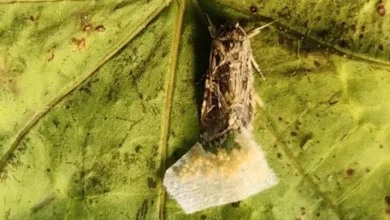‘It was a horrible scene to witness’: How bird flu has decimated elephant seal populations
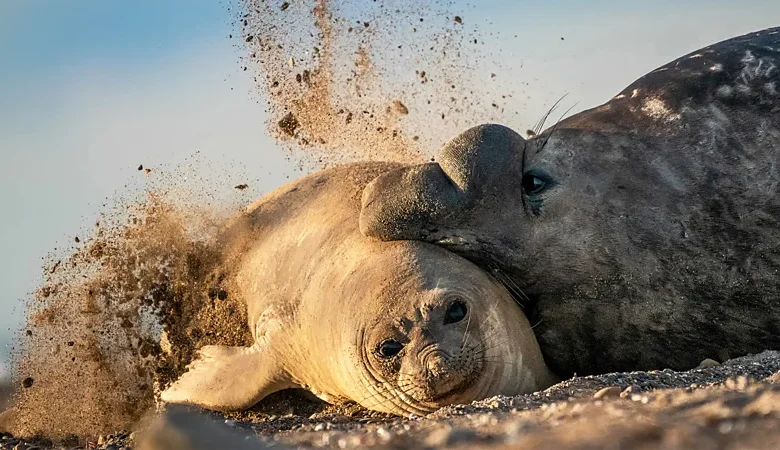
The sudden decimation by bird flu of the world’s largest seal has sent shockwaves through the scientific community, and the ecosystems shaped by these majestic animals.
At up to 5.8 metres (19ft) in length and weighing as much as 3,700kg (8,157lb), southern elephant seals are the world’s largest seal species. They spend most of their time alone, foraging at sea. But once a year, thousands gather to breed along the Patagonian coast of Argentina in a noisy, boisterous gathering of giants.
Julieta Campagna, a marine biologist with the non-profit World Conservation Society (WCS), grew up listening to the breeding season’s calls: the gruff rhythmic sounds of fighting between males and the squeaky cries of hungry pups calling their mothers. In October 2023, however, she was met with silence.
That year, Campagna and other researchers discovered hundreds of dead adults and newborn seals scattered on the Patagonian beaches of Peninsula Valdés. “I was petrified,” recalls Campagna. “We saw hundreds of dead pups being eaten by seagulls. It was a horrible scene to witness.”
The culprit was a deadly strain of bird flu, known as H5N1. First detected in poultry in 1996, by 2020 this highly pathogenic form of the virus had mutated to spread easily among wild bird populations. By 2022, it also began to transmit directly from mammal to mammal. Now, research seen is revealing the unprecedented extent of southern elephant seal decline in Argentina, which may have knock-on consequences for the wider ecosystem.

The evidence for mammal-to-mammal transmission initially came from marine mammals in South America, where the virus killed pinnipeds (seals and sea lions) on a large scale for the first time.
In Peru and Chile together, more than 30,000 sea lions died between 2022 and 2023. In Argentina, about 13,000 sea lions and fur seals were killed. But it was at the Peninsula Valdés that the most impactful die-off took place. Researchers estimate that nearly 97% of the site’s elephant seal pups died, making it the largest mortality event ever recorded for the species.
The exact extent of the virus’s global reach among seals and sea lions is not known. Researchers estimate it has affected around one-third of the world’s pinniped species so far. However, they say it is possible the flu has been affecting a greater number of individuals and a wider range of species than has been documented.
“While mass mortality events are highly visible, they may not represent the full spectrum of the virus’s effects on pinnipeds,” says Elizabeth Ashley, a veterinarian pathologist at the University of California, Davis. “Many pinnipeds are not easy to observe or access, so it is plausible that clustered or sporadic mortalities may have gone undetected in some locations.”
The mass die-off recorded among elephant seals at the Peninsula Valdés may therefore be just the tip of the iceberg of bird flu’s full impact on the world’s seals and sea lions – and on wider ocean life. Understanding why they were so susceptible, as well as the consequences of such dramatic declines, could now help researchers prepare for new viral threats still to come.
“When you remove such a big mass, you completely upset the balance of the ecosystem,” says Marcela Uhart, a wildlife veterinarian at the University of California, Davis. “No other species can replace elephant seals in the ocean.”
Southern elephant seals: an ‘impossibly‘ rapid decline
As soon as the mass die-off was discovered at Peninsula Valdés, researchers feared it would have significant long-term impacts on the southern elephant seal population. The site is the only mainland breeding ground for the species worldwide and is considered a site of global significance for the conservation of marine mammals by Unesco.
In 2023, however, it was impossible to know the full number of dead adults, as additional deaths could have occurred at sea. Or how many females had become pregnant after the outbreak. So at the end of 2024, in the following breeding season, Campagna and colleagues from WCS – along with scientists from the University of California, Davis and the Argentinian research agency Conicet – returned to survey the beaches once again.
Their results, released at the end of September 2025 and seen by the BBC, reveal that the elephant seal population at Peninsula Valdés decreased by 60% overall after the bird flu outbreak. According to researchers, this population drop fits the criteria of the International Union for Conservation of Nature (IUCN) to push a species population once considered of “Least Concern” to “Endangered”. While the official change of the species conservation status hasn’t happened yet, Uhart believe it will soon.
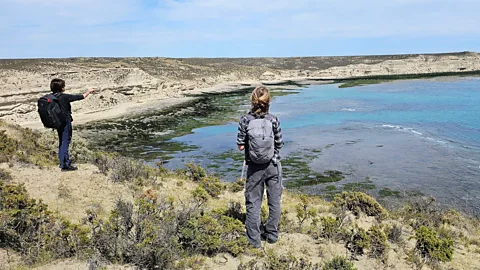
According to their latest findings, the total number of alpha males dropped 43% (from approximately 450 to 260), while female adults decreased by 60% (from about 12,000 to 4,800), compared to pre-pandemic seasons. The annual offspring was also slashed by nearly two-thirds, from around 14,000 to only 5,000.
“Before 2023, it was impossible to think that a healthy population like the one in Peninsula Valdés could become endangered from one year to another,” says biologist Valeria Falabella, seashore conservation director at WCS Argentina. “This is a warning,” she adds, noting that climate change brings additional risks and uncertainties for the species.
Based on historical records and the new survey numbers, Uhart, who has been monitoring the seals in Argentina since the outbreak, estimates that the population will probably take at least 70 years to recover to pre-outbreak levels, assuming no other environmental issues or outbreaks occur.
While sea lions died in even larger numbers across South America due to bird flu, the southern elephant seals were the most affected species, experiencing the biggest population declines observed so far. “They lost more than half of their adult population and we need adults to keep a population growing,” says wildlife veterinarian Ralph Vanstreels at the University of California, Davis. “The impact was brutal.”
According to Vanstreels, one of the likely reasons why this species was so badly affected is that during their breeding season they are concentrated in small areas, unlike other marine mammals, like sea lions, that breed along longer stretches of coast.
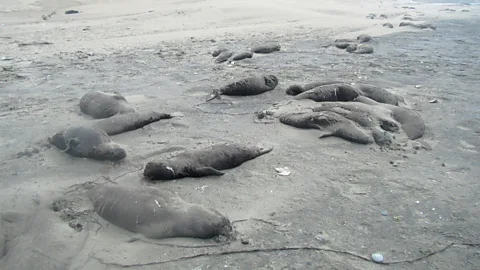 In contrast to the high mortality among southern elephant seals, northern elephant seals did not experience any die-offs. Researchers think this difference is partly due to the fact that other forms of the influenza virus, including the H1N1 swine flu, had been circulating in the Northern Hemisphere for at least 40 years, infecting seals and sometimes causing mortality but also bestowing some immunity. While for South America, it was a totally new exposure.
In contrast to the high mortality among southern elephant seals, northern elephant seals did not experience any die-offs. Researchers think this difference is partly due to the fact that other forms of the influenza virus, including the H1N1 swine flu, had been circulating in the Northern Hemisphere for at least 40 years, infecting seals and sometimes causing mortality but also bestowing some immunity. While for South America, it was a totally new exposure. Researchers believe the bird flu is likely being spread around the globe by migrating scavenger seabirds, such as skuas and giant petrels, which feed on the infected carcasses of other birds or mammals.
Pinnipeds were especially affected by the bird flu because they often meet and breed in dense coastal colonies that overlap with large populations of seabirds, explains Vanstreels. This proximity increases opportunities for the virus to spill over to mammals through contact with infected birds. But researchers still don’t know the details of how transmission happens.
In the Peninsula Valdés, researchers think the virus might have passed on from mother to pups through the placenta and their milk. They also noted that the virus is able to jump back from the seals to birds again. Still, they don’t know whether the virus is transmitted by air, saliva, faeces or other ways.
Going south: bird flu’s sub-Antarctic spread
Meanwhile, bird flu has also been devastating southern elephant seals that breed on sub-Antarctic islands.
In late 2023, the virus arrived in south Georgia, in the Southern Atlantic. This heavily glaciated island, which hosts the world’s largest population of elephant seals with over 400,000 animals, saw massive die-offs of the species, along with other animals like brown skuas, wandering albatross and Antarctic fur seals.
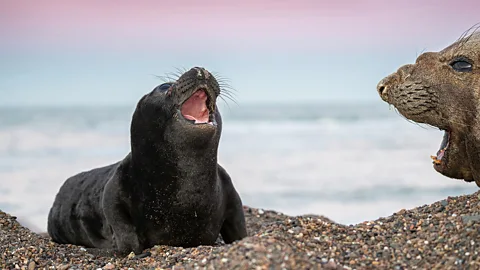
In October 2024, traveling with migratory birds, the virus then reached the French archipelagos of Crozet and Kerguelen in the sub-Antarctic Indian Ocean – among the most isolated islands of the world. There, it killed hundreds of king penguins and fur seals, and has continued to cause massive die-offs of elephant seals, comparable to one reported in Argentina, says ecologist Thierry Boulinier at the Center for Functional and Evolutionary Ecology in France. Elephant seals are the most affected species in the region, he says.
A year later and researchers have announced that the virus might have spread further still, reaching the Australian sub-Antarctic islands of Heard and McDonald Islands, less than 500km (311 miles) away from Kerguelen. There they found several dead elephant seals, including pups, which have not yet been tested for the flu. To date, Australia is the only continent that remains free from the highly contagious bird flu.
Researchers are now racing to assess how much worse the impact of these creatures could still get. Boulinier’s team was the first to witness the impact of the bird flu in the Indian Ocean. Last season, wearing hazmat suits, they collected blood from live animals and brain tissue samples from the carcasses of several species. They hope to better understand how the virus is spreading and if the animals are developing any immunity against it.
So far, blood sample analysis has been mostly negative for antibodies among elephant seals in this region, suggesting that a large portion of the population has not yet been exposed to the virus or developed immunity. “That raises concerns,” says Boulinier, who is leaving for the islands to continue monitoring in a few weeks. “If there is another outbreak this year, it may also be devastating.” Many of the seal species found in Antarctica and Sub-Antarctic regions are endemic and can only be found in these places, making mass die offs an even greater threat.
A ‘cascade’ of harm
What could this spread mean for the rest of life in the oceans? Elephant seals are top predators in the food chain, and a decline in their population can lead to cascading effects impacting the whole ecosystem, according to researchers, causing an increase in some fish species and a decrease in others, for example.
Elephant seals are also especially important as an “ocean fertiliser”, says Uhart. They are incredible divers, able to hold their breath for up to two hours and go as deep as 2.1km (7,000ft) in their pursuit of fish. In this process, they spread nutrients from their faeces in different layers of the water, feeding other creatures.
“There is an entire food web that needs the seals pooping and adding nutrients to the ocean,” Uhart explains.
Likewise, a drop in other seal and sea lion species would have similar effects in the ecosystem, scientists say.
When you remove such a big mass, you completely upset the balance of the ecosystem – Marcela Uhart
Back in Peninsula Valdés, Campagna just finished another survey of the elephant seals this October. The results will take months to be released, but she foresees the estimates won’t change much. While the scientists observed a slight increase in the population this year, this fits their current predictions of a lengthy recovery period.
Despite no sign of massive die-offs in the last two years, Campagna warns that the virus is still circulating on the continent and advises people to keep at least 30m (98ft) distance from the seals – both for animal and human safety. “The seals tend to abandon their pups when disturbed by people, so it is crucial for the public to keep a distance – to protect the animals and also to reduce their own risk of contamination,” says Campagna.
In August, a new outbreak of bird flu was reported among poultry in Argentina. Preliminary research analysing the virus has shown that it has mutated and evolved to include parts of other local viruses, potentially becoming more powerful. Researchers are particularly concerned about the impact the virus could have on already endangered and endemic pinniped species, which occur in small numbers in restricted areas, such as the Hawaiian monk seal and the Galapagos fur seal.
As Uhart, who participated in the study, sees it, “It is a new monster on the move.”



